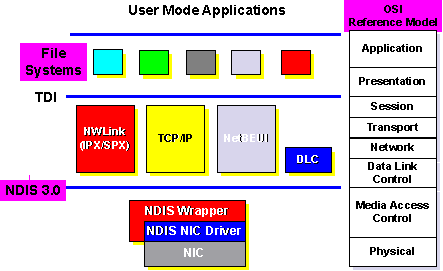Network Components Built Into Windows NT

To understand networking on Windows NT, you need to understand its architecture. The Windows NT network architecture is modular in design, allowing one network component to be replaced with a newer one without having to provide a new set of components from the ground up.
Windows NT networking components include:
- Transport protocols (DLC, NetBEUI, NWLink, and TCP/IP) define the rules governing communications between two computers.
- Inter-process communication (IPC) components, such as named pipes and mail slots, allow applications to communicate with each other over a network.
- File and Print sharing components allow resources to be made available on a network.
- The Multiple uniform naming convention (UNC) Provider (MUP) and Multi-Provider Router (MPR) make it possible to write applications that use a single API to communicate using any network vendor's redirector.

